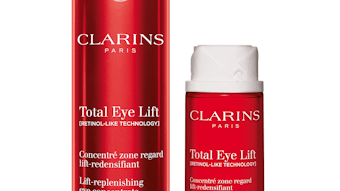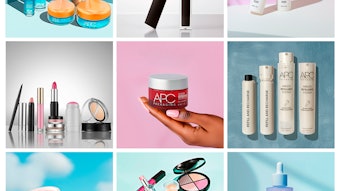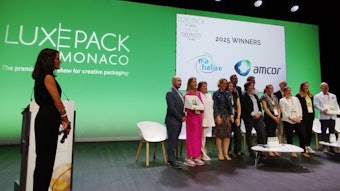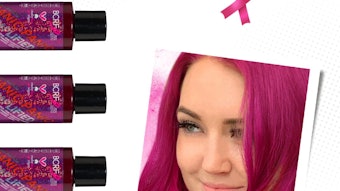There’s a funny moment in the movie What Women Want when Mel Gibson, newly blessed with the ability to hear what women are thinking, is walking through Central Park literally inundated with hundreds of female voices in his head.
For many consumers, a stroll down the beauty aisle is a bit like this scenario. Dozens of beauty products vying for attention and interest reach out from the shelf with their own unique voices, all desperately trying to get us to understand them. And because beauty products (usually) can’t actually talk, the job of conveying this critical information falls squarely on the shoulders of two key brand elements that many times aren’t given the TLC they deserve: primary and secondary packaging.
First Contact
Often the first contact a consumer has with your beauty brand, successful packaging must cut through the cacophony of other brand messages, capture her interest and connect with her emotionally—and all in the space of about three seconds. It’s a tall order for an area that is typically smaller than a wallet, and frequently only able to fit about 35 or so words of copy.
But no matter the size of your primary and secondary components, and no matter how many words you have to play with, it is critical you use these two pivotal brand elements wisely so that from the very first glance, your consumer goes from a browser to a loyal, emotionally connected consumer.
Hear Me, Hear Me
In 2010, The Beauty Company asked leading beauty executives, brand managers, retailers and CMOs their top branding concerns, and half of all of them agreed that connecting with consumers on an emotional level was their top primary concern, and the same holds true today. Creating an emotional bond with your target isn’t just important, it’s crucial.
Happily, this is the perfect place for your primary and secondary packaging to shine. Successful packaging is the voice of your brand. Much, much more than just pretty images and great words, carefully crafted and thoughtfully designed packaging takes the very essence of your brand, distills this essence down to the vital core, and then within a very small space and with very limited words, creates the foundation of an emotional connection with your consumer that must translate into deeper interest and ultimately, a purchase.
When no one else is around to speak for your brand, such as a representative or sales consultant, it is critical that both the primary and secondary packaging creates a mental and emotional connection with her as soon as she touches the tester or picks up the box to learn more about the product.
As mentioned earlier, this first impression, which often happens in three seconds or less, is her doorway to purchase. Do you have an amazing ingredient? Breakthrough clinical claims or a revolutionary delivery mechanism? Well then tell her, but do so in a way that is fresh, compelling, and that ladders her up to want to continue learning more about your product and lose all interest in your competition.
Love at First Sight
If you want her to walk through the door and fall deeply in love with your brand, you must be certain your packaging is telling the story she wants to hear or she’s going to move on to the next opportunity.
Unlike the not-so-distant past when packaging might have just been a vessel to get the product from point A (the store) to point B (the consumer’s home), today packaging is a fluid extension of the brand, and consumers are unabashedly connecting with these elements. It’s no accident that for millions of women the world over, the mere act of walking out of a Jimmy Choo or Tiffany boutique with the telltale shopping bag evokes strong feelings of excitement, happiness and pride. Indeed women are often just as excited to show off the bag as they are to wear the new pumps or sport the bling. And when it comes to beauty, the attachment to packaging—and primary packaging, in particular—is even more pronounced.
Functions and Feelings
From a functional standpoint, of course consumers should love using your product because the packaging is easy to understand and utilize. Compacts open seamlessly, pumps dispense product evenly and lids fit securely.
But from an emotional standpoint, she should love using your product because of what pulling that compact or lip gloss out of her handbag says about her, and how it makes her feel—sexy, beautiful and special. A perfect example of this phenomenon is Chanel. Many consumers are unable to afford Chanel haute couture or jewelry, but they can afford a luxurious Chanel powder compact—and this small slice of the larger brand allows women to feel and enjoy the luxury of owning a real Chanel product but at a cost that isn’t prohibitive to their wallets.
The result? The Chanel beauty consumer emotionally feels connected to the elegance and cache of the entire Chanel brand each time she slips to the ladies room to touch up her powder or freshen her lipstick. And perhaps more importantly, the message, voice and positioning of Chanel as a brand—not just the beauty segment—is strengthened and maintained each time she uses her compact, both to herself and to anyone else who sees those iconic interlocking double Cs.
Most consumers are not consciously aware of it, but their product choices are rooted in their desire to advertise their personality to the world and attract mates and friends. The emotional attachments they form with your brand, from the packaging to the story to the products, are the glue that keeps consumers interested, loyal and motivated to consistently seek out information on your products versus giving your competition a try.
Bottom line, strategically designed and thoughtfully executed packaging is your brand’s way of helping her make that choice.
Alisa Marie Beyer is the founder and creative director of The Beauty Company (TBC), a global beauty consulting firm offering business, strategy, consumer intelligence and branding. Serving its clients at every stage of development (from start-ups to 13 of the top 15 global beauty companies), TBC intimately understands the industry, the consumer and the market, and becomes an integral part of each client or project team. [email protected]; thebeautycompany.co









